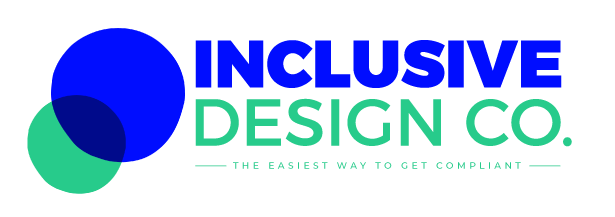Vikas Khorana is president, CTO and co-founder at Ntooitive Digital, the end-to-end digital technology partner marketing leaders trust.
Accessibility prioritization benefits everyone.
With the ever-evolving challenges related to the Covid-19 pandemic, web accessibility is essential in our new physically distant but socially connected way of life. Communities all over the world are unsure how much longer they’ll have to wait until the coronavirus dissipates, children return to school and employees go back to work. But for the millions of people who are blind, deaf or motor-disabled, one thing hasn’t changed: The internet serves as the only means with which disabled people purchase food, prescriptions and supplies, as well as communicate with the world around them.
For business owners, all thesocial distancing and working from home has provided the perfect invitation for us to focus on the details of our business that may have been overlooked or not prioritized. One recent study analyzed 10 million webpages and found that most e-commerce sites are not compliant with what is referred to as “Web Content Accessibility Guidelines” (WCAG). Although there isn’t a legal prescription for web accessibility for private companies in the U.S., WCAG is frequently referenced by courts when adjudicating compliance litigation. Alarmingly, 98% of websites failed compliance standards for their menus alone, and many sites were not navigable by a keyboard, nor did they incorporate code that could communicate with screen readers and other assistive tools. This is a big deal, and we must do a better job of ensuring equal access to all people.
For tech leaders and citizens of humanity, there is no question that accommodating those who are disabled is the right thing to do. It’s our responsibility. Discrimination of any kind is unacceptable. However, it makes good business sense as well to be more accommodating, particularly when internet use is at an all-time high. Business owners certainly want as many people as possible to be able to access their website, purchase goods and otherwise do business with them.
It is estimated that more than 1 billion people — 15% of the world’s population — have disabilities. That’s 25% of American adults, or 61 million people, who spend over $200 billion annually. Globally, an estimate of the disability market is nearly $7 trillion. Missing out on such a large segment of the population due to poor website accessibility is simply foolish.
Expect Lawsuits To Intensify
If the preceding information was not compelling enough for your business to reexamine its website accessibility and content, perhaps this is. The L.A. Times reported in 2018 that over 20% of ADA lawsuits filed in the first 6 months of 2018 were regarding website noncompliance. Industries affected included e-commerce businesses, hotels, consumer goods companies, singer-songwriters and more. These lawsuits also affected major corporations such as Domino’s Pizza, Nike, Burger King and Hershey’s, to name a few. With Covid-19 adding to the aggravations and fears of people with disabilities, such lawsuits are only likely to increase.
The Time For Action Is Now
Given the current reliance on the internet, the need for website accessibility is even more urgent.
Forward-thinking companies have already taken strides to create better accessibility for the digital consumer. For example, in an effort to stimulate an equal access digital environment, Microsoft unveiled its $25 million disability initiative in 2018. “By innovating for people with disabilities, we are innovating for us all,” Microsoft President Brad Smith said. Whether online or at local brick-and-mortar storefronts, consumers want to do business with purpose-driven companies run by people who care.
I agree with Microsoft. Consumers are indeed attracted to purpose-driven companies. People expect more from the companies they do business with, and they should. But this isn’t just an idea to stand behind because it feels like the right thing to do. In fact, organizations that embrace this change as an opportunity to both establish and fuel a better digital experience for consumers are not only likely to see their websites prioritized by search engines, but they could also experience higher market share gains. Brands that authentically lead with purpose “grow three times faster on average than their competitors,” according to Deloitte, “all while achieving higher workforce and customer satisfaction.” It’s a no-brainer.
How Businesses Large And Small Can Take Steps To Protect Themselves
Currently, there is a lack of regulatory guidance from our enforcement agencies regarding website accessibility and the ADA. Thus, enforcement has largely been left in the hands of plaintiffs’ counsel. This lack of guidance is troublesome because it has left the area with imprecise standards and amorphous rules.
But while the lack of guidance is frustrating, I suggest not waiting. Take the first step by emphasizing accessibility as a priority with your web team. If your organization regularly upgrades your website and/or associated app to make them faster, more secure or better optimized for search, then add accessibility to the to-do list. Familiarize yourself with WCAG, and test your website yourself using accessibility browsing tools to see how your site can be improved.
Even incremental changes over time can do nothing but good for consumers and for your organization. By running your business with inclusion and accommodation at the forefront of your mind, you are already ahead of the game. As tech leaders, we especially must do a better job of ensuring equal access to all people. It’s our responsibility.

